Discover the World’s Finest Wool – Origin and Properties of Alpaca Wool
Alpaca Wool
Even if the designation wool for alpaca is correct purely by scientific definition. Not anyone who is in the alpaca industry would call the fine hair of the Alpacas Wool. Alpaca is usually called Alpaca Fiber! But still People who search the internet mainly search for Alpaca Wool.
The fine alpaca fiber comes from the name-giving alpacas, which originally come from Peru, but are now bred all over the world.
The exclusive wool in its various forms has unique properties that are more than just warming. This is also a reason why alpaca wool is one of the most exclusive yarns and, therefore, one of the most expensive products on the market.
Origin of Alpaca Wool
The Alpaca is a species of camelid native to Peru, in South America where they were raised as farm animals. The domestication of alpacas was already carried out about 3000 years ago by the early South American cultures.
Already the Incas appreciated them and used alpaca products. At that time, the animals served as carriers and meat suppliers and were naturally kept for their unique wool. Alpaca wool protects people from extreme cold and has the excellent property of preventing sweating in hot weather.
The Incas bred large herds of alpacas. However, this changed with the conquest of Peru by the Spanish, who brought their sheep with them and showed no interest in getting closer to the local wool suppliers. Thus, the alpaca became the farm animal of the poor indigenous population and was almost extinct in the meantime.
It was only with the independence of the states of South America that the value of alpaca was recognized again. Breeding was resumed, and the wool was exported worldwide as a sought-after raw material.
Peru alone is the home of about 3.0 million out of the 4.4 million alpacas in the world today. Is essence, 80% of the global population of Alpacas live in Peru, western Bolivia and Chile.1
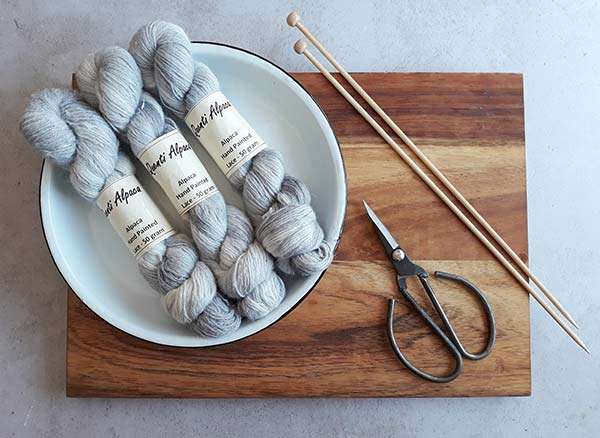
That ethnic patterns have conquered the world of fashion.
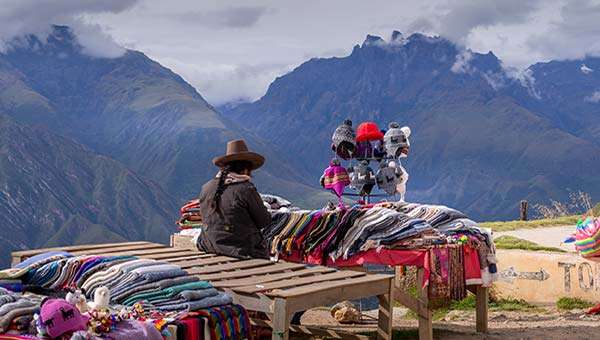
Properties of Alpaca Wool
Why alpaca fibre is so valuable becomes clear when you look at the fibre structure: the fibres are hollow inside and therefore have unique thermal properties that make it possible to wear alpaca clothing in both summer and winter:
- The fibres insulate you from the cold and thus ensure well-being even the thermometer falls below zero degree celsius.
- During winter, the alpaca wool helps you stay warm by retaining the heat coming from your body.
- The fibre repels heat in the summer screen, the scorching sum away from your body.
- Sweats and other moistures are absorbed by the fibre and dispelled through the hollow fibres. That explains why socks made from alpaca wool are exceptionally comfortable.
- Garments made from alpaca wool does not retain odour. Even if you sweat a lot, the stench of sweat does not persist because the molecules of the alpaca wool neutralise the odour.
The alpacas themselves leave practically no ecological footprint. When herds of alpacas graze in the Andean highlands, they do so with the utmost care. In contrast to many other animals, alpacas do not tear out the entire roots of the plants when eating. They cut the grass with their teeth without pulling on it, and so eat only the tops of the grass in their natural habitat. The plants, therefore, grow back quickly.
Features of Alpaca Wool
The natural thermostatic feature of alpaca is not the only reason why the demand for alpaca wool has been rising over the years. It also provides outstanding value for people living in the harsh weather conditions of the South American Andes – the home of the Alpacas.
The following features of clothing made from alpaca enabled the indigenes to cope with the extreme weather conditions.
- Particularly long-lasting.
- Dirt repellent.
- Hard-wearing (about three times more tear-resistant than sheep wool).
- Moisture-repellent (the moisture absorption index is only 25 per cent).
- Less prone to tangling (which is often a problem with other natural fibres).
- Impenetrable to UV rays
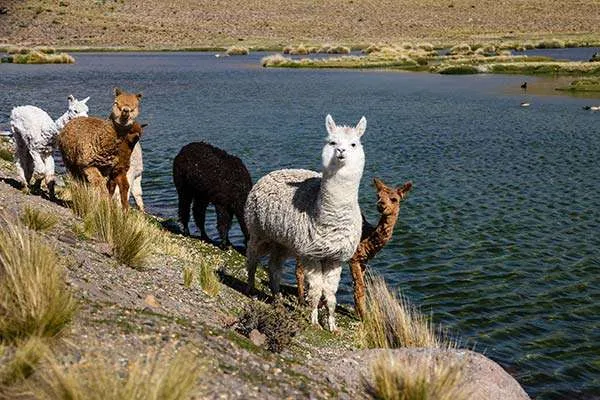
Fiber Diameter:
The subtle and delicate fibres of alpaca give it the elegant skin texture. At 0.4 microns (1000 Micron = 1 millimeter), the scale structures are interwoven seamlessly.
This is why alpaca can be used to make very light garments. Moreover, alpaca does not elicit the scratching effect typical of other wool products such as sheep’s wool that has 0.8 microns scale structure.
Here are various quality grades based on thickness:
- Baby Royal under 20.0 micron
- Baby Alpaca 20.1 – 23.0 micron
- Superfine 23.1 – 26.9 micron
- Medium 27.0 – 30.9 micron
- Strong 31.0 – 35.9 micron
- Coarse 36.0 micron & stronger
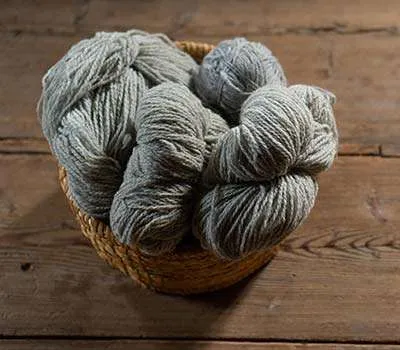
Have you ever experience your body hair standing up when you wear a fabric? This is caused by static electricity. Alpaca does NOT react this way because of its antistatic properties. Moreover, alpaca wool is difficult to ignite (560 degrees Celsius), while pure alpaca fibre is completely non-flammable.
Fabric made from alpaca wool is excellent for people suffering from allergies. The low percentage of wool fat actively resists the accumulation of bacterial cells that causes infection. This explains why alpaca fabrics have antibacterial properties.
The natural sheen is another reason why Alpaca wool is in high demand. In fact, the lustre does not vanish after dyeing the material. Besides, dyeing is not necessary because Alpaca wool is available in multiple colours including white, beige, brown and red-brown shades of grey and black. No other animal in the world is this colourful.
The wearing properties of alpaca wool are impressive. This natural fiber has excellent thermal properties, as the fleece of alpacas is designed to protect the animals from both severe cold and intense heat.
Alpaca wool is perfect for blankets as well as baby clothes and scarves, both for summer and winter textiles. Alpaca wool can even be compared to cashmere, as it is also fine, soft, and of high quality.
Another unique feature of alpaca wool is that it does not cause pilling, which can happen with other wool fibers
Production of Alpaca Wool
Alpacas are shorn once a year in spring, and the fleece is roughly cleaned after shearing and sorted by color. The yield is 3 to 5 kg wool per animal.
The wool is sorted by quality, whereby only the 1st quality can be used for yarn processing. Since alpaca wool is of such high quality, it can also be processed per animal.
Afterward, the dried wool is carded; this is a process of aligning the loose alpaca fibers into a strain of fleece with the help of a carding machine.
Alpacas, like many sheep, have awn hairs. These are thicker, straight long hairs located between the undercoat and ensure that the fine coat does not become matted.
That is why alpacas should not be brushed; this would destroy the fur structure.
The awn hairs are, as already mentioned, much coarser than the undercoat, and you can simply card them along, but you can also sort them out, and the final result will be much finer. (Baby Alpaca)
Once it has been carded, the strains are ready to be spun with a Spinning Wheel into yarn.
Finally, the wool should be washed to remove impurities; to clean the delicate alpaca fibers, we recommend using a gentle, purely herbal wool detergent specially formulated for these fine fibers.
There are still several intermediate steps in the industrial process of yarn processing. The wool is then ready for sale as knitting wool or further processing.
Alpaca wool does not contain lanolin, which makes it easy to clean.
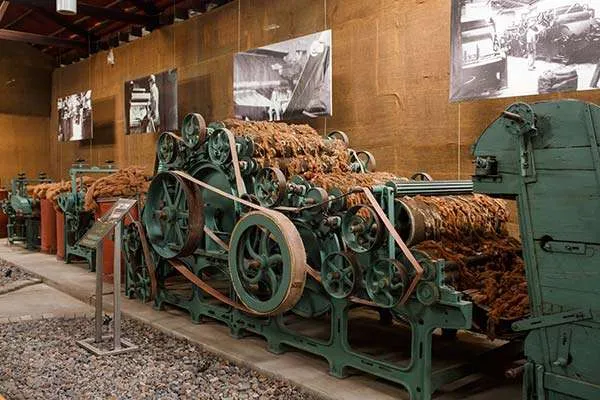
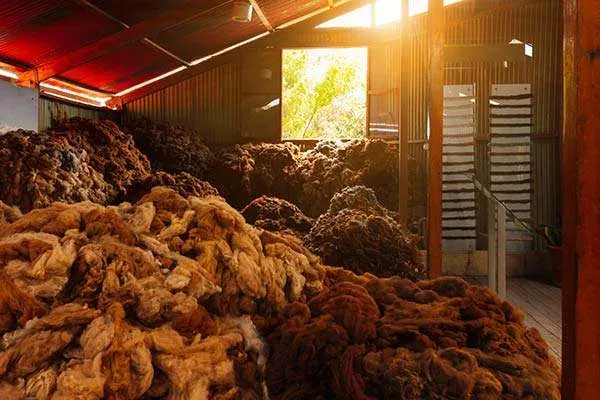
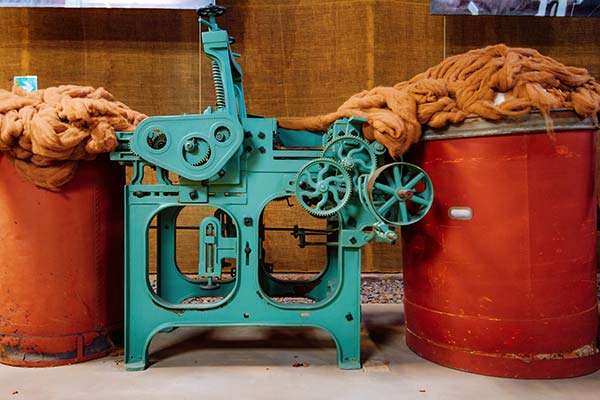
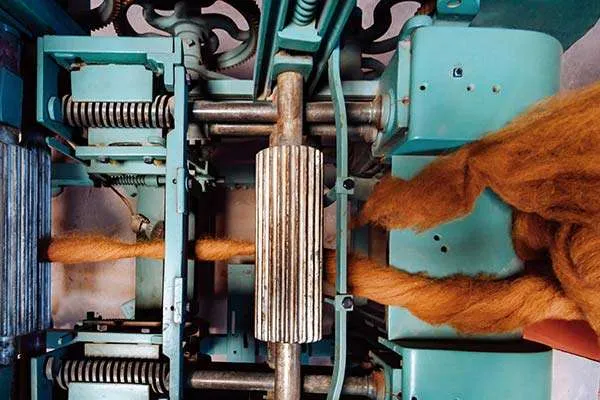
In the Museum Mundo Alpaca in Arequipa – you can enjoy the “Full Alpaca Experience”.
You can interact with alpacas in beautiful natural surroundings and you are able to watch live demonstrations of traditional fibre-sorting and weaving techniques.
Included the Museum of Textile Machinery, the only one of its kind in Peru.
Usage of alpaca wool
Alpaca wool is mainly used for garments to enhance comfort due to its unique properties. The garments are mostly scarves, sweaters, and ponchos (in the style of the Peruvian Indians who traditionally wear ponchos) and socks that are made from alpaca wool. There is a huge variety of Alpaca Fashion nowadays all over the World.
The Manufacturers of duvets and pillows also use this valuable product. Customers who are allergic to other materials do have a good night’s rest with products made from alpaca wool. Thanks to the antibacterial and allergenic properties of alpaca.
Caring for Alpaca Material
Material made from the finest wool should be treated delicately, with hand-washing being the best method of cleaning. You will never want to use harsh chemicals on the product.
A soft shampoo is even the best option. To dry the material, you can put the garment on a dry towel. Roll the towel up, and press to remove water. Repeat this process a couple of times until the majority of water is gone.
Once it is dry, you will want to fold it carefully and store it on a shelf or drawer.
Alpaca material is prone to stretching out and weakening if not treated carefully.
Prices of alpaca wool
The properties, quality, and precise production process are factors that determine the cost of alpaca wool products. It is one of the high-end wool types in the market.
There is a significant difference between the prices of unprocessed alpaca wool and the apparel made from it. For instance, a kilogram of the raw material costs around 100 $ from native alpaca breeders.
The alpaca fiber passes through additional manufacturing procedures to create end products, such as scarves, pullovers, socks, etc. That is why the cost of alpaca garments is so high that they are classified as luxury products.
Below are the estimated prices of products made from 100% alpaca wool:
- Alpaca scarf: $50 to 200
- Alpaca pullover approx. $100 to 300
- Alpaca socks cost about $10
- Alpaca blankets cost about $350
However, the final price of the product depends on the designer. The prices quoted above are for products made from the highest grade alpaca wool (rated in microns.). The costs above are estimated, you can expect slight deviations in the actual market price.
Thank you for reading about the Origin and Properties of Alpaca Wool. If you would like to discuss Alpaca wool or any other type of fine wool further, don’t hesitate to send me a message.
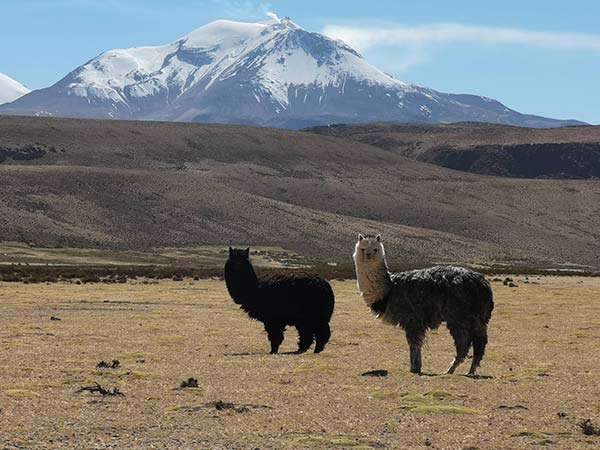
Here you can read everything about How to identify real Alpaca Fabrics!
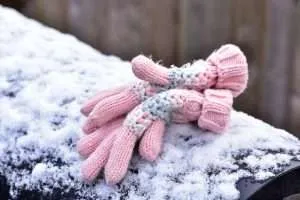
Crochet baby gloves: Two easy crochet patterns
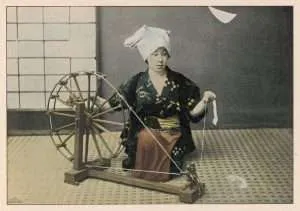
Celebrating the Craftsmanship and Contributions of Women in Spinning Wool

Why does Pilling occur? Cause, Prevention & Removal

The Origins of Crochet and How It Has Evolved – A Brief History of Crochet
Marco Heitner
Alpaca References:
- Alpaca, https://en.wikipedia.org/w/index.php?title=Alpaca&oldid=962564088 (last visited July 12, 2020).
- DJ’s Alpaca, History of the Alpaca – (last visited July 12, 2020).
- Alpaca Owners Association – Alpaca Info. (last visited July 12, 2020).
- Bonny Doon Alpacas – Alpaca History & FAQ. (last visited July 12, 2020).
- Alpaca fiber, https://en.wikipedia.org/w/index.php?title=Alpaca_fiber&oldid=964147975 (last visited July 12, 2020).
- INWOOL, Alpaka Wolle – Wissenswertes und Eigenschaften – (last visited July 12, 2020).
- Alpakas vom Silberberg, Alpaca Geschichte in Stichpunkten – (last visited July 12, 2020).
- The Complete Alpaca Book (2006) by Eric Hoffman: . Bonny Doon Press ISBN 0-9721242-1-7.
- Alpaca, https://en.wikipedia.org/w/index.php?title=Alpaca&oldid=932122480 (last visited Dec. 26, 2019).



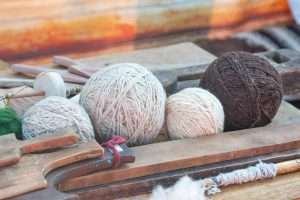


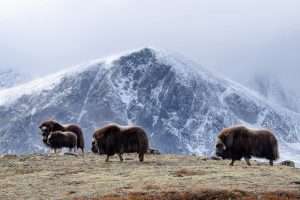
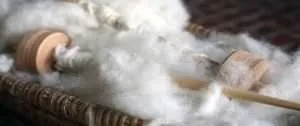
0 Comments